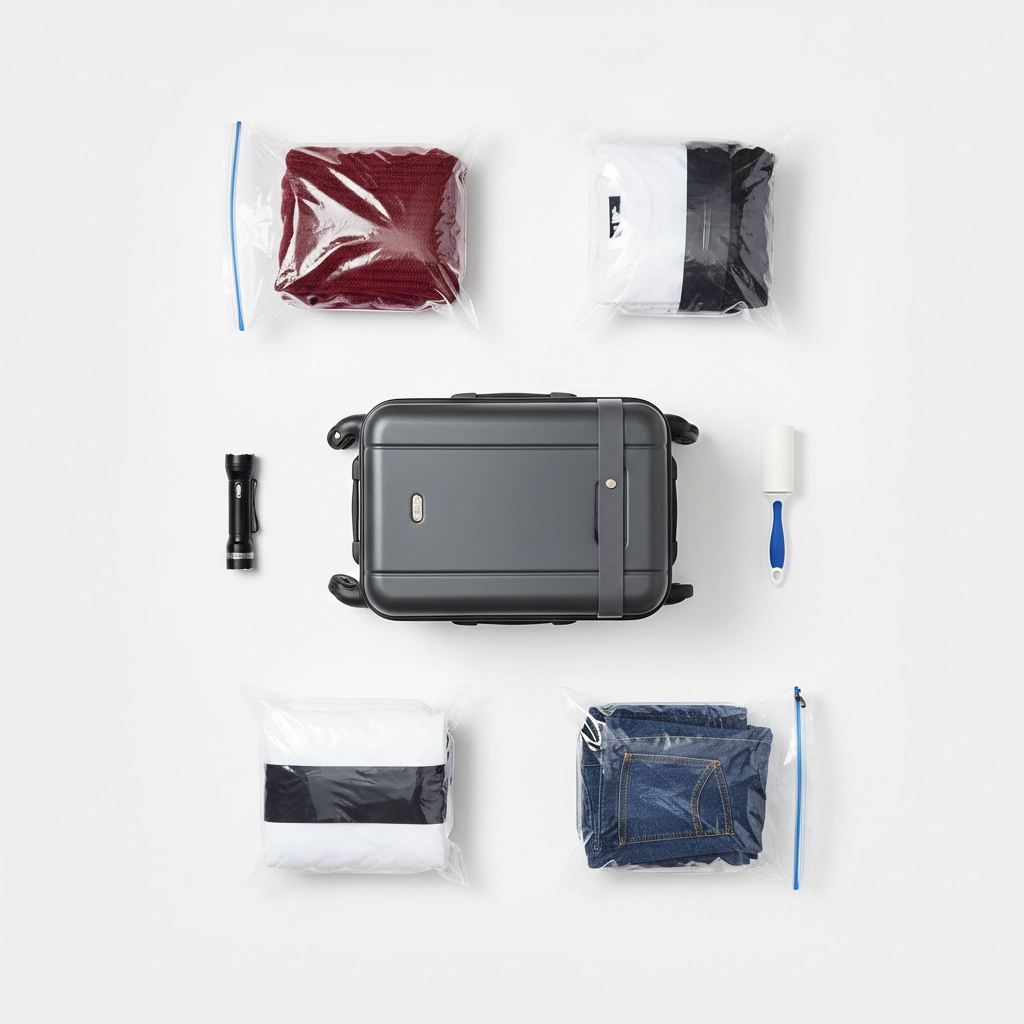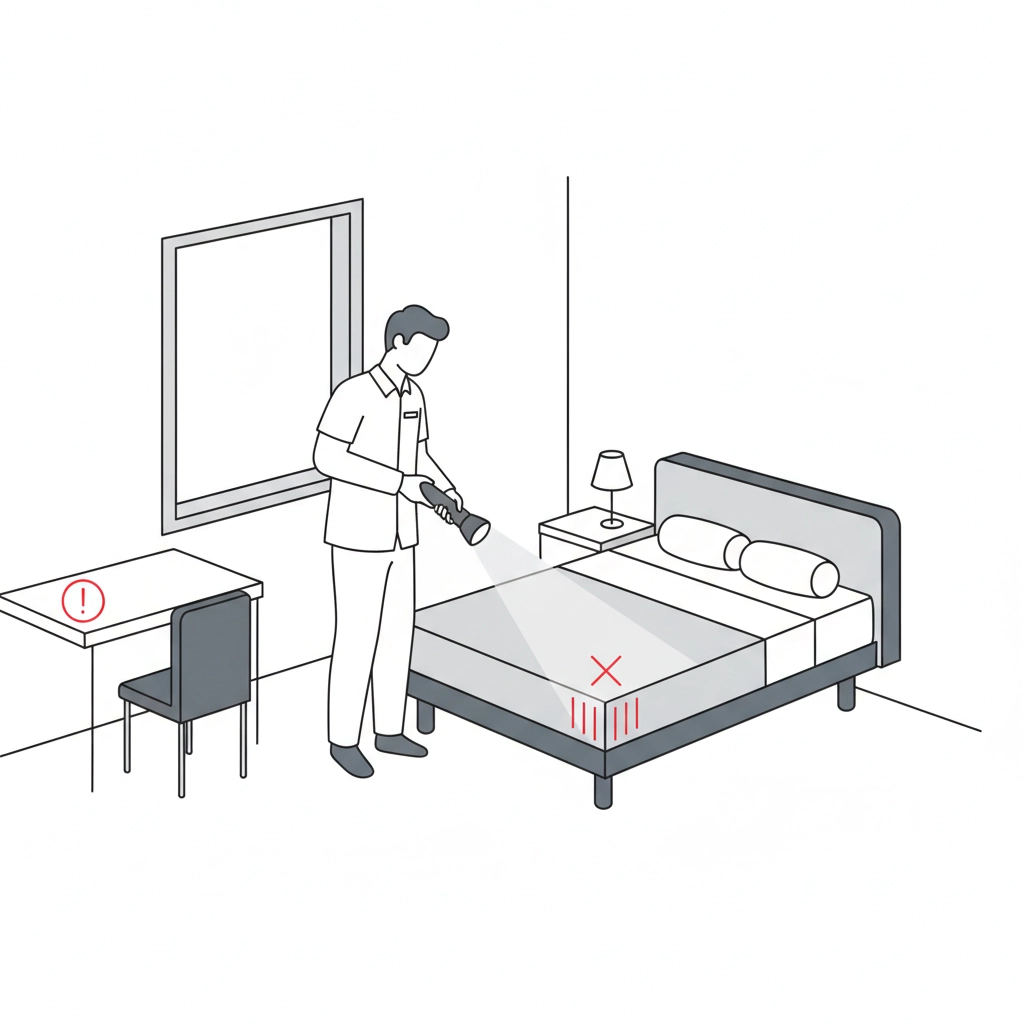Travellers Guide: How to Avoid Bedbugs in Hotels, Cottages, and On-the-Go
- Targeted Wildlife and Pest Solutions

- Sep 26
- 5 min read
Whether you're heading to a cozy cottage in Muskoka, exploring downtown Toronto, or traveling internationally, bedbugs can quickly turn your perfect getaway into a nightmare. These persistent pests have become increasingly common in accommodations across Ontario and beyond, with 75% of pest control professionals reporting encounters with bedbug infestations in hotels and motels.
The good news? With proper knowledge and a few simple precautions, you can significantly reduce your risk of encountering these unwelcome travel companions. This guide will equip you with everything you need to protect yourself, your belongings, and your home from bedbugs during your travels.
Pre-Travel Preparation: Your First Line of Defense
Your bedbug prevention strategy begins before you even leave home. Smart packing can make all the difference in keeping these pests at bay.
Choose the Right Luggage
Hard-case luggage offers superior protection compared to fabric bags, as it's much harder for bedbugs to latch onto smooth surfaces. If you must use soft luggage, consider placing it inside a large plastic trash bag or protective cover for the duration of your trip.
Pack Smart with Protective Barriers
Place all your clothing in re-sealable plastic bags before packing. You can find large-sized bags at most hardware stores. This creates an effective barrier that makes it extremely difficult for bedbugs to infiltrate your belongings, even if they manage to get into your luggage.
Essential Travel Tools
Pack a small flashlight and lint roller in your carry-on bag. These simple tools will help you spot bugs that may be camouflaged by dark upholstery or hiding in dimly lit corners. The flashlight is particularly useful for thorough room inspections upon arrival.
What NOT to Pack
Avoid spraying your luggage or clothing with insect repellent or pesticides. These chemicals are ineffective against bedbugs and can be harmful to your health. Stick to physical barriers and inspection techniques instead.

Accommodation Inspection: Your Room Security Check
The moment you arrive at your accommodation: whether it's a luxury hotel or a rustic cottage: conduct a thorough inspection before unpacking or settling in.
Start with the Bed
Pull back the sheets and carefully examine the mattress seams, paying special attention to the corners and head of the bed. Look for small dark stains (bedbug excrement), blood stains, or reddish-brown spots. Check underneath the mattress corners and box spring for bugs or their eggs, which appear as tiny white spots about the size of grains of salt.
Expand Your Search
Bedbugs are excellent hiders. Inspect these common hiding spots:
Seams, creases, and folds of mattresses and box springs
Cracks in bed frames and headboards
Behind wall décor and artwork
Underneath and between cushions of chairs and couches
Between folds of curtains and drapes
In and around nightstand drawers
Behind electrical outlets and switch plates
Along baseboards and carpet edges
Inside alarm clocks, telephones, and lamps
Know What You're Looking For
Besides live bugs (which are about the size of an apple seed and reddish-brown), watch for dark or rust-colored stains on sheets, sweet musty odors, and small blood spots on pillows or linens. Remember that bedbugs are most active at night and retreat to hidden crevices during the day.
During Your Stay: Protective Practices
Once you've confirmed your room is bedbug-free, maintain vigilance throughout your stay with these protective practices.
Luggage Management
Never place your luggage on the bed, floor, or upholstered furniture. Inspect the luggage rack carefully, and if it shows no signs of infestation, use it to keep your suitcase elevated and away from potential hiding spots. Alternative safe locations include hard surfaces like tables, dressers, or even a clean, dry bathtub.
Daily Vigilance
Check your bed linens each morning for new signs of bedbugs. If you notice unexplained bites on your body (typically in clusters or lines), small blood stains on sheets, or detect a sweet, musty odor, investigate immediately.
If You Find Bedbugs
Don't simply request a different room: bedbugs can easily spread through housekeeping carts and even wall sockets. If you must change rooms, ensure your new accommodation isn't adjacent to or directly above or below the suspected infestation. In cases of clear infestation, consider requesting a refund and finding alternative lodging, as the entire property may be affected.

Post-Travel Precautions: Protecting Your Home
Your bedbug prevention efforts don't end when you return home. These final steps ensure you don't inadvertently introduce these pests to your living space.
Luggage Inspection and Treatment
Before bringing your luggage inside, conduct a final inspection in your garage, porch, or other area away from your main living space. Look for bugs, eggs, or suspicious stains that might indicate hitchhikers in your bags.
Vacuum your suitcase thoroughly, paying attention to seams, pockets, and corners. Consider using a garment steamer on your luggage, as the high heat will kill any bedbugs or eggs that may have made the journey home.
Clothing Care
Wash all clothing in hot water immediately: even items you didn't wear. Hot water and high-heat drying cycles are lethal to bedbugs at all life stages. If you suspect potential exposure, place clothing directly into a hot dryer for 30 minutes before washing.
For items that can't be washed, such as shoes or souvenirs, consider freezing them for several days at temperatures below 0°F, or use a professional steaming service.
Special Considerations for Cottages and Vacation Rentals
Cottages and vacation rentals in areas like Haliburton County require extra attention, as these properties may have less frequent professional cleaning and inspection compared to commercial hotels.
Thorough Property Assessment
Pay particular attention to upholstered furniture that may not be cleaned as frequently. Check all bedrooms, even those you won't be using, as bedbugs can travel between rooms. Examine any vintage or antique furniture, as these pieces may have harbored infestations from previous locations.
Communication with Property Owners
Don't hesitate to ask property owners about their bedbug prevention and inspection protocols. Reputable rental operators will appreciate your proactive approach and should be able to provide reassurance about their pest management practices.

Prevention is Your Best Protection
While the chances of encountering bedbugs remain relatively low, taking these preventive measures requires only a few extra minutes but can save you weeks of dealing with an infestation at home. Remember that bedbugs don't discriminate: they can be found in luxury resorts as easily as budget accommodations.
These resilient pests are excellent hitchhikers, but they don't transmit diseases and can be effectively managed with professional help when necessary. By staying vigilant and following these guidelines, you can travel with confidence knowing you're prepared to identify and avoid these unwelcome companions.
For travelers in the Haliburton County area and throughout Ontario, staying informed about bedbug prevention is an investment in your peace of mind. If you suspect you've encountered bedbugs during your travels or notice signs of infestation at home, don't hesitate to contact professional pest control services for immediate assistance.
Safe travels, and remember: a little preparation goes a long way in keeping your adventures bedbug-free.
Comments